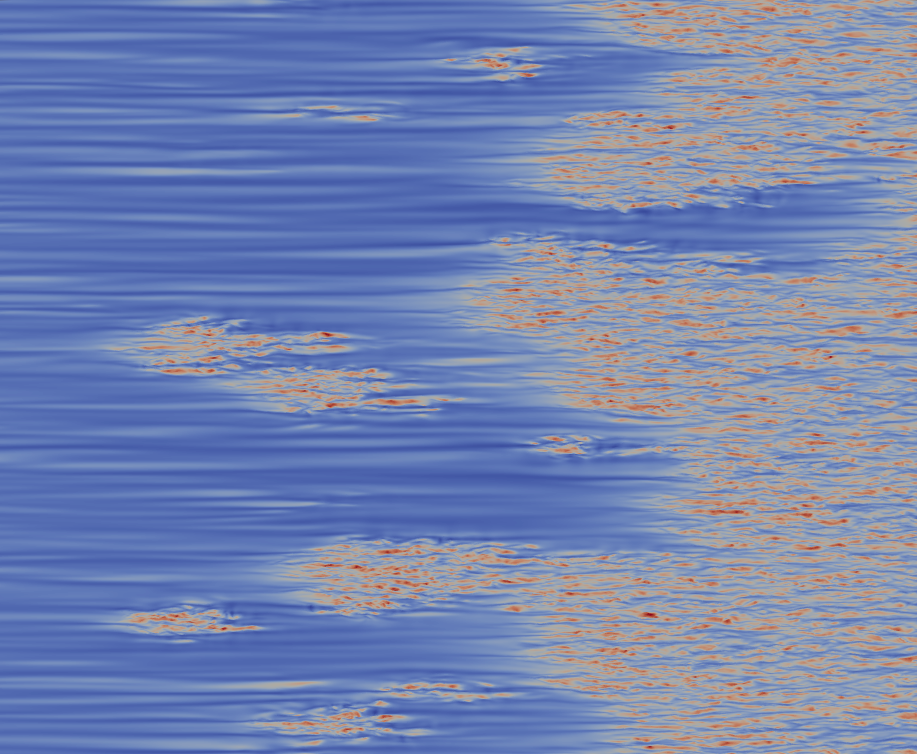Johns Hopkins Turbulence Databases

Transitional boundary layer
Dataset description
Transitional boundary layer:
Simulation data provenance: Dr. Jin Lee and Prof. Tamer Zaki of JHU (see README-transition_bl for more details).
- Direct numerical simulation (DNS) of a transitional boundary layer over a plate with an elliptical leading edge.
- Navier-Stokes was discretized on a curvilinear grid and solved using a finite volume DNS code.
- A fractional-step algorithm was adopted, and the spatial discretization was a staggered volume-flux formulation.
- The viscous terms were integrated in time implicitly using the Crank-Nicolson and the advections terms were treated explicitly using the Adams-Bashforth.
- Pressure was treated using implicit Euler in the δp-form. The pressure equation was Fourier transformed in the span, and the resulting Helmholtz equation was solved for every spanwise wavenumber using two-dimensional multi-grid.
- After the simulation has reached a statistical stationary state, 4701 frames of data, which includes the 3 components of the velocity vector and the pressure, are generated and written in files that can be accessed directly by the database (FileDB system).
- Since the grid is staggered, data at the wall are not stored in the database. However, JHTDB provides values in the region between the wall and the first grid point, y∈[0, 0.0036], using 4th-order Lagrange polynomial inter- and extrapolation.
- The y-locations of the grid points in the vertical direction can be downloaded from this text file.
- The time-averaged statistics can be downloaded from this HDF5 file. Brief notes are here.
Disclaimer: While many efforts have
been made to ensure that these data are accurate and reliable within
the limits of the current state of the art, neither JHU nor any other
party involved in creating, producing or delivering the website shall
be liable for any damages arising out of users' access to, or use
of, the website or web services. Users use the website and web services
at their own risk. JHU does not warrant that the functional aspects
of the website will be uninterrupted or error free, and may make
changes to the site without notice.
Last update: 7/5/2020 9:21:04 PM